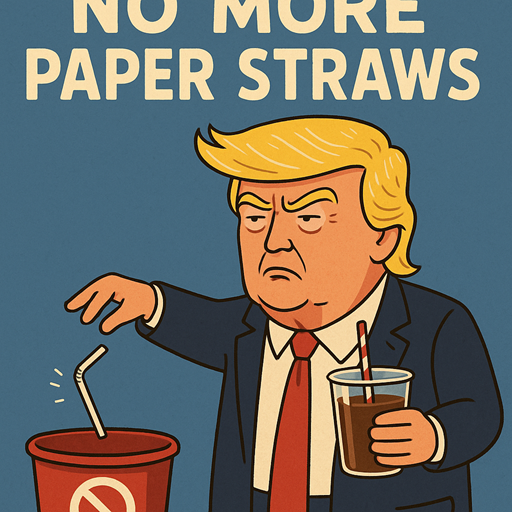-
-
-
Total:
-
NEWS

19
Month 09
By: Cao Tấn Nho
Arguments Supporting President Trump’s Decision to End the Use of Paper Straws
In February 2025, President Donald Trump signed an executive order ending the procurement and for...
In February 2025, President Donald Trump signed an executive order ending the procurement and forced use of paper straws across U.S. federal agencies. This move sparked debate, but there are strong arguments supporting the decision. The following analysis highlights the functional, environmental, health, and social dimensions of this policy.
1. Functionality and Consumer Experience
Paper straws often become soggy and unusable in both hot and cold beverages. This compromises the consumer experience, especially in high-demand service environments. Maintaining reliable alternatives such as plastic or reusable straws ensures practicality and convenience (AP News, 2025).
2. Health Concerns: PFAS in Paper Straws
A 2023 study by the University of Antwerp found that 90% of tested paper straw brands contained PFAS, so-called 'forever chemicals' linked to health and environmental risks. By contrast, reusable stainless steel straws contained no detectable PFAS. Thus, paper straws may not be the safe alternative they are often marketed as (Trier et al., 2023).
3. Life-Cycle Environmental Trade-Offs
Life-cycle assessments (LCA) demonstrate that paper straws are not always more sustainable than plastic. Depending on end-of-life treatment, polypropylene (PP) or biodegradable PLA alternatives can outperform paper in terms of energy use, emissions, and resource efficiency. Thus, banning plastic straws in favor of paper oversimplifies complex environmental trade-offs (Muthu, 2021; European Bioplastics, 2022).
4. Accessibility and Disability Rights
For many people with disabilities, paper straws are not suitable due to fragility and lack of flexibility. Plastic straws remain essential for safe and independent drinking. Disability advocacy groups have consistently emphasized the need to preserve access to plastic straws for inclusivity (National Council on Disability, 2019).
5. Proportion of Plastic Waste
Straws represent a very small fraction of overall marine plastic pollution—estimated at less than 1% by weight. Larger contributors such as packaging, fishing gear, and industrial plastics demand far greater attention. Targeting straws may be more symbolic than impactful (Ocean Conservancy, 2019).
6. Policy Stability and Cost Efficiency
Requiring agencies to adopt paper straws only to reverse the policy later results in wasteful spending and operational confusion. Trump’s executive order restores clarity and prevents unnecessary costs associated with ineffective substitutions (Reuters, 2025).
Conclusion
President Trump’s decision to end the forced use of paper straws is supported by arguments grounded in functionality, public health, environmental science, accessibility, and policy efficiency. While reducing plastic waste remains important, focusing on higher-impact sources and promoting truly sustainable alternatives offers a more balanced and effective approach.
References
AP News. (2025, February 10). Trump signs executive order ending paper straws in federal agencies.
European Bioplastics. (2022). Environmental assessment of PLA products.
Muthu, S. S. (2021). Comparative life cycle assessment of disposable straws.
National Council on Disability. (2019). Straw bans and accessibility concerns.
Ocean Conservancy. (2019). International coastal cleanup report.
Reuters. (2025, February 10). Trump administration halts paper straw mandates.
Trier, X., et al. (2023). Presence of PFAS in paper straws: A European market study. University of Antwerp.

